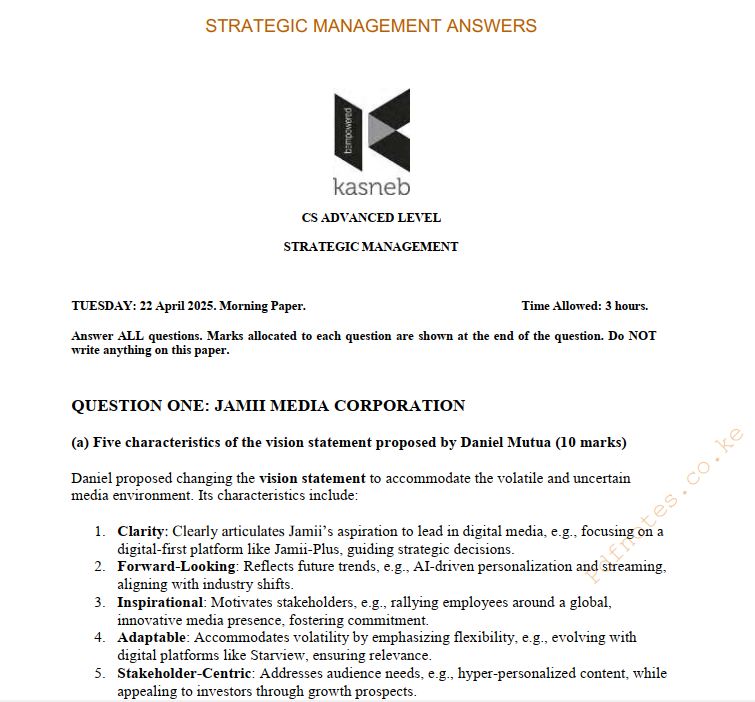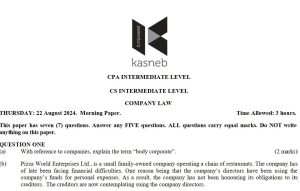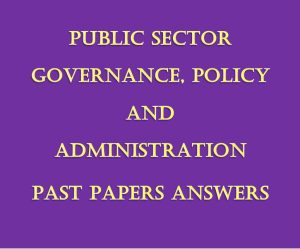Original price was: KSh300.KSh199Current price is: KSh199.
Download April 2025 Strategic Management Past Paper answers in Pdf form
Description
QUESTION ONE
JAMII MEDIA CORPORATION
In the heart of a bustling metropolis, Jamii Media Corporation stood as a titan of the entertainment industry. Renowned for its innovative content and expansive reach, the company faced a turning point as digital disruption reshaped the media landscape. At the helm of this challenge was Daniel Mutua, the newly appointed Chief Executive Officer (CEO), whose vision and leadership were tested from the moment he stepped into his corner office. Daniel was a strategist by nature, with a background in management consulting and a reputation for turning around struggling businesses. His task was formidable: steer Jamii Media into a future where streaming services, user-generated content and AI-driven platforms dominated, threatening the company’s traditional revenue streams. He called for an immediate executive meeting to address the critical need for a strategic overhaul. He proposed a change of vision statement to accommodate the volatility and uncertainty of the new media business environment.
The meeting room was filled with familiar faces: Rachel Okeyo, the ambitious Chief Content Officer; Victor Maina, the conservative Chief Financial Officer (CFO); Eliud Kapoor, the forward-thinking Head of Digital Strategy and Luis Kipkorir, the pragmatic Chief Operations Officer (COO). Each brought their perspectives to the table, often clashing over the best path forward. “Our traditional broadcast revenue has declined by 15% year-over-year”, Victor began, his tone sombre, as he presented the latest financial report. “We can’t ignore the erosion of our advertising base. Audiences are migrating to digital platforms and our current offerings aren’t keeping up”.
During the strategic meeting, Rachel emphasised the critical need to increase investment in original content. She pointed to the success of the company’s drama series last year as evidence that exceptional storytelling continues to attract and engage audiences. Rachel asserted that the primary challenge does not lie in the quality of content but rather in the distribution platforms. In response, Kapoor presented data visualisations illustrating that while high-quality content is essential, the effectiveness of delivery mechanisms is equally important. He highlighted that streaming services such as Starview and Hyperflix have revolutionised how audiences consume media. Kapoor argued that without substantial investment in a robust digital platform, the company risks losing competitive ground in the market. Furthermore, a joint venture was proposed as a strategic initiative for the internationalisation of the business. This approach was identified as a key frontier for any forward-looking organisation aiming to expand its global footprint and drive future growth.
Luis added a pragmatic perspective, “Building a streaming platform isn’t just about technology. It is about creating an ecosystem partnering with device manufacturers, licensing content and ensuring a seamless user experience. It is a massive undertaking that we will need to prioritise”. Daniel absorbed the input, his mind racing with possibilities. He knew that any successful strategy would require alignment across the leadership team and a clear roadmap. “Let us focus on three key questions”, he said, his voice cutting through the heated debate. “Firstly, what is Jamii’s unique value proposition in this new digital era? Secondly, how do we allocate resources to maximise impact? Lastly, how do we ensure organisational buy-in for the changes ahead”? Luis was a strong advocate of vertical integration strategy.
Over the next several weeks, Daniel led the team through an intensive strategic planning process. They engaged external consultants to conduct external business environment scanning and great emphasis was put on competitor analysis. Workshops were organised with mid-level managers to gather grassroots insights and brainstorming sessions were conducted to encourage creative thinking. Slowly, a plan began to take shape. The cornerstone of Jamii’s strategy was a new digital-first platform named Jamii-Plus that would combine premium original content with user-curated channels. Unlike competitors, Jamii-Plus would leverage AI to offer hyper-personalised viewing experiences, creating a unique selling point. The platform would also integrate social features, enabling users to share playlists and interact with creators directly. To fund the initiative, Victor reluctantly agreed to reallocate Sh.200 million from the traditional broadcasting division. This decision was met with resistance from legacy teams, but Daniel’s persuasive communication and clear rationale helped ease tensions. “We’re not abandoning our roots,” he explained at an all-hands meeting. “We’re evolving them for a new generation.”
Rachel took charge of content development, rallying her team to produce high-quality, diverse programming tailored to global audiences. She greenlit several ambitious projects, including an international drama series and a documentary exploring climate change’s impact on urban life. Kapoor spearheaded the technology and digital strategy. He hired top talent from Silicon Valley, implemented agile methodologies, and partnered with a leading AI firm to develop Jamii- Plus’s recommendation engine. His bold moves earned him both admiration and scrutiny within the company. Luis focused on operational excellence, ensuring the infrastructure could support the platform’s ambitious goals. He negotiated deals with internet service providers to ensure fast and reliable streaming for users, especially in emerging markets.
Three years into the “Jamii 2030” strategy, the results were clear. Jamii-Plus had surpassed 50 million subscribers, making it a serious contender in the streaming wars. Reflecting on the journey, Daniel addressed the leadership team at an annual retreat. “What we’ve achieved isn’t just about technology or content”, he said. “It’s about embracing change and believing in our collective potential. The media landscape will continue to evolve, and so will we”. As the sun set over the retreat venue, the team once divided by differing perspectives raised their glasses in a toast to the future. Jamii Media’s story was far from over, but its trajectory was undeniably upward, driven by a strategy that blended vision, execution and resilience.
Required:
(a) Daniel Mutua proposed a change of a certain statement to accommodate the volatility and uncertainty of the new media business environment.
Evaluate FIVE characteristics of this statement. (10 marks)
(b) Explain FIVE benefits of the strategic initiative that was proposed for the internationalisation of business at Jamii Media Corporation. (10 marks)
(c) Analyse FIVE challenges associated with the integration that Luis was a strong advocate for, at Jamii Media Corporation. (10 marks)
(d) External consultants put great emphasis on a particular analysis while conducting external business environment scanning.
Examine FIVE steps involved in this analysis. (10 marks)
(Total: 40 marks)
QUESTION TWO
(a) Highlight FIVE limitations of strategic management. (5 marks)
(b) Summarise FIVE steps of strategic change. (5 marks)
(c) Evaluate FIVE key processes followed in the effective implementation of a strategy. (5 marks)
(Total: 15 marks)
QUESTION THREE
(a) Identify FOUR disadvantages of low cost leadership. (4 marks)
(b) Evaluate FIVE steps of sustaining organisational effectiveness. (5 marks)
(c) Explain THREE steps in value chain analysis. (6 marks)
(Total: 15 marks)
QUESTION FOUR
(a) Discuss FIVE international strategies that can be adopted by an organisation. (5 marks)
(b) Explain FIVE disadvantages of multi divisional organisation structure. (5 marks)
(c) Appraise FIVE strategic roles of emergent strategy developers. (5 marks)
(Total: 15 marks)
QUESTION FIVE
(a) Illustrate FIVE effects of strategic drift on the strategic management process. (5 marks)
(b) Analyse FIVE ways a company’s statement of corporate values influences its strategic direction. (5 marks)
(c) Summarise FIVE key processes an organisation can follow to ensure its structure aligns with its strategy.(5 marks)
(Total: 15 marks)
…………………………………………………………………………………………………….




